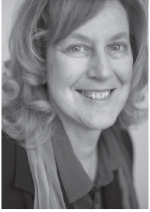Personal Finance Classics

 Publishers churn out books about money management so quickly that it’s hard to keep up. The number of titles expands at an exponential rate.
Publishers churn out books about money management so quickly that it’s hard to keep up. The number of titles expands at an exponential rate.
It’s funny to see this happen, since there’s nothing much new to say. Personal finance books tend to pay tribute to a handful of eternal truths:
- Spend less than you make.
- Budget and track your expenses.
- Save for a time when you stop working.
- Take risk to make your money grow.
- Control your emotions (fear and greed).
- Build assets and track your net worth.
- Insure yourself against death, illness and accidents.
In 1926, U.S. author George S. Clason wrote The Richest Man in Babylon, a book still in print, which lays out seven cures for a lean purse:
- Start thy purse to fattening.
- Control thy expenditures.
- Make thy gold multiply.
- Guard thy treasures from loss.
- Make of thy dwelling a profitable investment.
- Insure a future income.
- Increase thy ability to earn.
Sound familiar? While some things have changed in the past century—the birth of the Internet, the complexity of financial products and services, the growth of credit and debt—those eternal truths remain the same.
So, what makes a personal finance book stand out? How can the writers attract attention and build an audience for their books?
If you check the top 50 personal finance bestsellers at Amazon.ca, you will find it’s dominated by U.S. authors.
The biggest is Robert Kiyosaki, who wrote a 1997 book, Rich Dad Poor Dad: What the Rich Teach Their Kids About Money that the Poor and Middle Class Do Not! It’s a compelling story about a high-income school principal and a street-smart business owner—can you guess which dad is rich and which is poor?—and is said to be the #1 personal finance book of all time with over 30 million copies, leading to many more books, even a board game.
Another fixture on the bestseller list is charismatic U.S. talk radio personality Dave Ramsey, famous for his 2013 book, The Total Money Makeover: A Proven Plan for Financial Fitness. He’s known for his debt snowball method, where you pay off debt in order of smallest to largest, gaining momentum as you knock out each balance. When the smallest debt is paid in full, you roll the money you were paying on that debt into the next smallest balance.
Motivational speaker Tony Robbins is a confident neurolinguistic programming pitchman who recently emerged as a money guru. In his 2014 book, Money: Master the Game, he interviews 50 financial experts to “create a simple 7-step blueprint that anyone can use for financial freedom.” (Again, there’s the number seven.)
Not surprisingly, many Canadians who leave reviews at Amazon.ca often find these books foreign in addressing only U.S. readers, overly long and uninspiring.
Luckily for us, there are two home-grown authors who have found a home among the top 50 U.S. money authors. Coincidentally, both their books came out in 2011.
I’m talking about The Wealthy Barber Returns by David Chilton, who wrote a 1989 bestseller, The Wealthy Barber (no longer in print, but available used), and Millionaire Teacher: The Nine Rules of Wealth You Should have Learned in School by Andrew Hallam, a now-retired teacher who lived in Singapore for many years.
Unlike the U.S. money gurus, these authors stand out as having a Canadian temperament. Less arrogant. More friendly. Keen to provide real-life backup for the advice they dispense.
Chilton has a knack for self-deprecating humour. He’s honed his skill in hundreds of speeches and uses some of his silliest stories in the book, like the racehorse (Dash Lauxmont) he bought with 18 friends as an investment. Dash broke his leg on the first day, but the insurance wouldn’t pay unless he was dead. The owners nursed him back to health.
“Things didn’t get better with time. Last, last, last, last. Race after race, Dash provided almost surreal consistency. When he finally broke through and finished second last, we were accused of doping. He didn’t pace so much as he shuffled. His movement eerily resembled the moonwalk. The only good news was that at this speed there was no risk of reinjury.
“Showman Billy Rose once advised, ‘Never invest your money in anything that eats....’
Words to live by.”
(Excerpt from: David Chilton, The Wealthy Barber Returns. Apple Books.)
Hallam talks about growing up in a low-income household with his dad, a mechanic, and his mom working part-time for slightly more than minimum wage at a store.
“Perhaps I developed an early respect for money because I never had any while growing up,” he writes in his blog. “And when I was 19, I met a mechanic who happened to be a millionaire. I learned that it wasn’t always necessary to have a high-paying job in order to build wealth. I wanted to become a school teacher. And I figured that if a mechanic could grow wealthy on a middle-class salary, then I could, too.”
So, what makes these books worth buying? What hard-earned lessons do the authors impart?
The Wealthy Barber Returns came out 21 years after Chilton’s first chart-topper, when he was “significantly older and marginally wiser” and questioning some of his earlier teachings. He’s worried about high household debt loads and worries that “pay yourself first” (his key point) is often neutralized “by excessive spending made possible by easy credit.” Monitoring expenses, which he downplayed before, tends to reduce spending.
He’s also less keen about buying mutual funds to invest for retirement—a message gratefully received by banks and investment dealers, which bought multiple copies of the earlier book. Having turned cost-conscious, he prefers broadly diversified Exchange-Traded Funds (ETFs) and tones down the 15 per cent annual returns used in the first book.
If you loved The Wealthy Barber because it told a story, you may be disappointed. This is not a sequel. Rather than repeat the fictional format of barber Roy Miller teaching finances to his young friends, the author gives his own “unique perspectives about the world of money.”
After looking at many people’s finances and seeing the enormous debt they were taking on, Chilton couldn’t believe how many people were heading toward retirement in not very good shape. He decided to focus on overspending and tell us why we find it hard to save.
When it comes to saving, you don’t have much of a support group, he says. Spending less than you make won’t be easy. People are going to fight you every step of the way. And the person who will fight you the hardest will be yourself. Learn to say the four liberating words, “I can’t afford it.”
The second half of the book is all over the map. Some big-picture stuff, some minutiae. Some numbers, some psychology. Some do’s, some don’ts. Chilton has two big themes:
- Financial planning is surprising straightforward, a combination of common sense, vanilla products and time-tested principles.
- Human nature matters. Big time. It influences us in many ways as we manage our money.
- We’re easily distracted and scared.
- So, keep it simple and get out of your own way.
(Disclaimer: I endorsed Chilton’s second book after passing on the first, which didn’t appeal to me. In this one, he calls me one of his favourite financial journalists who can write intelligently about any money matter. He wrote a foreword in my 2012 book, Fight Back.)
Andrew Hallam was a successful stock picker for many years. Then, he sold all his stocks (more than $700,000 worth) and switched to a Couch Potato strategy, in which you buy the whole stock market through an index and hold onto it for the long term.
In 2009, he was diagnosed with bone cancer at age 38. He had won a running race with 11,000 people just a few months earlier. Surgeons removed chunks of three ribs and part of his spinous process. He ran the same race two years later and crossed the finish line in 3rd place.
He wrote Millionaire Teacher to distract himself while recovering and says cancer gave him three money lessons:
- Patience pays. Instead of racing, try to focus on slow, steady improvements.
- The odds matter. All the data show that a strategy of buying low-cost index funds beats the results of 80 per cent of active investors.
- Simple is good. His wife didn’t want to pick stocks, so he taught her how to rebalance the index portfolio once a year.
“I read more than 400 personal finance books before I turned 35,” Hallam writes in his introduction. “I boiled my learning down to nine rules of wealth that I should have learned in school. By applying them, I became a debt-free millionaire in my late 30s. No, I didn’t inherit money, nor did I take big risks. I became a high school personal finance teacher. I worked at a school that viewed the subject as important.”
At the private school where he taught, no one was eligible for defined benefit pensions. He volunteered to give after-school money seminars to colleagues and gave out free investment books. But few people could understand the jargon. So, he decided to write his own book, enlisting 100+ friends and colleagues to contribute to it. He wanted to find out what the average person knew about money, so he could reach the widest audience.
I have two favourites among his nine rules:
- #3 Small fees pack big punches. Most financial advisors are salespeople who’ll put their own financial interests ahead of yours. If they’re buying actively managed mutual funds for their clients, they’re doing their clients a disservice. They should direct their clients toward index funds instead.
- And #8 Peek inside a pilferer’s playbook. Hallam did a mystery shopper experiment in Vancouver. He paid $50 each to four people to go to four bank branches (CIBC, RBC, TD, BMO) and book an appointment with a financial advisor. What happened? None of the advisors wanted to build a low-cost portfolio with the bank’s index funds, even when asked. Instead, they offered actively managed mutual funds at more than double the cost of the bank’s index funds.
“There are lots of books on personal finance,” said Ian McGugan of The Globe and Mail, “but blessed few that discuss the topic with wit and even fewer that do so with soul. Andrew Hallam’s second edition of Millionaire Teacher is to my mind the best. Read it. You’ll be entertained. You’ll also be richer in every sense.”
Scott Burns, a former U.S. finance columnist who’s known for creating the Couch Potato portfolio investment strategy, said about Hallam’s book: “With nine simple rules, he gives you easy, step-by-step instructions. Follow them and you’ll be on your way to a successful (and possibly early) retirement.”
Hallam quit teaching at age 44 in 2014 and left Singapore. Until the pandemic hit, he and his wife Pele gave public talks about money around the world and rode a tandem bicycle across the Canadian Rockies. He still writes for The Globe and Mail and does a retirement income blog for AssetBuilder, a financial service firm based in Texas.
Join me next time in Canadian Moneysaver, where I’ll introduce you to more personal finance classics.
Ellen Roseman is a monthly columnist for LowestRates.ca, investing for beginners instructor at University of Toronto continuing studies, board chair at FAIR Canada, an investor advocacy group. @ellenroseman on Twitter.

